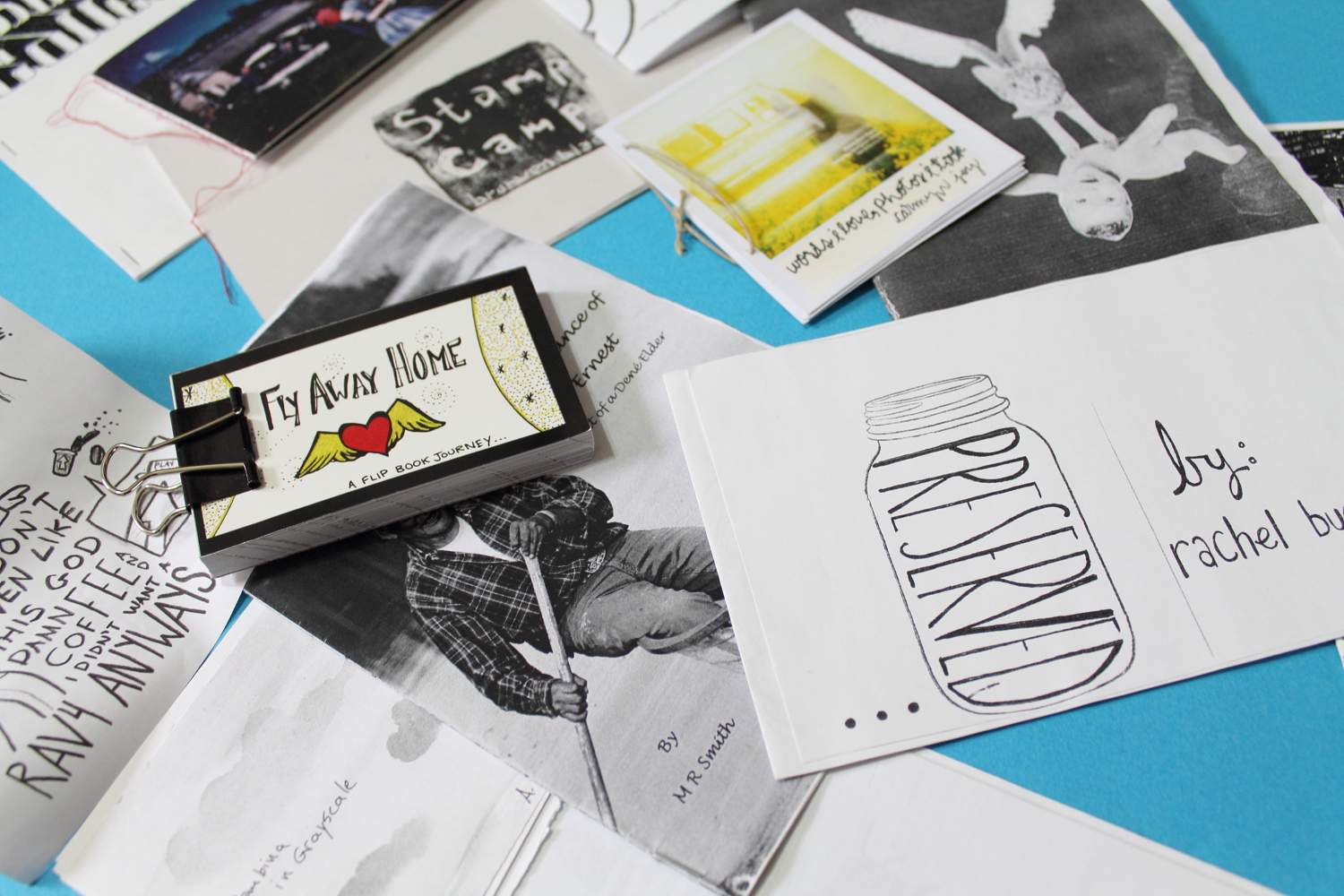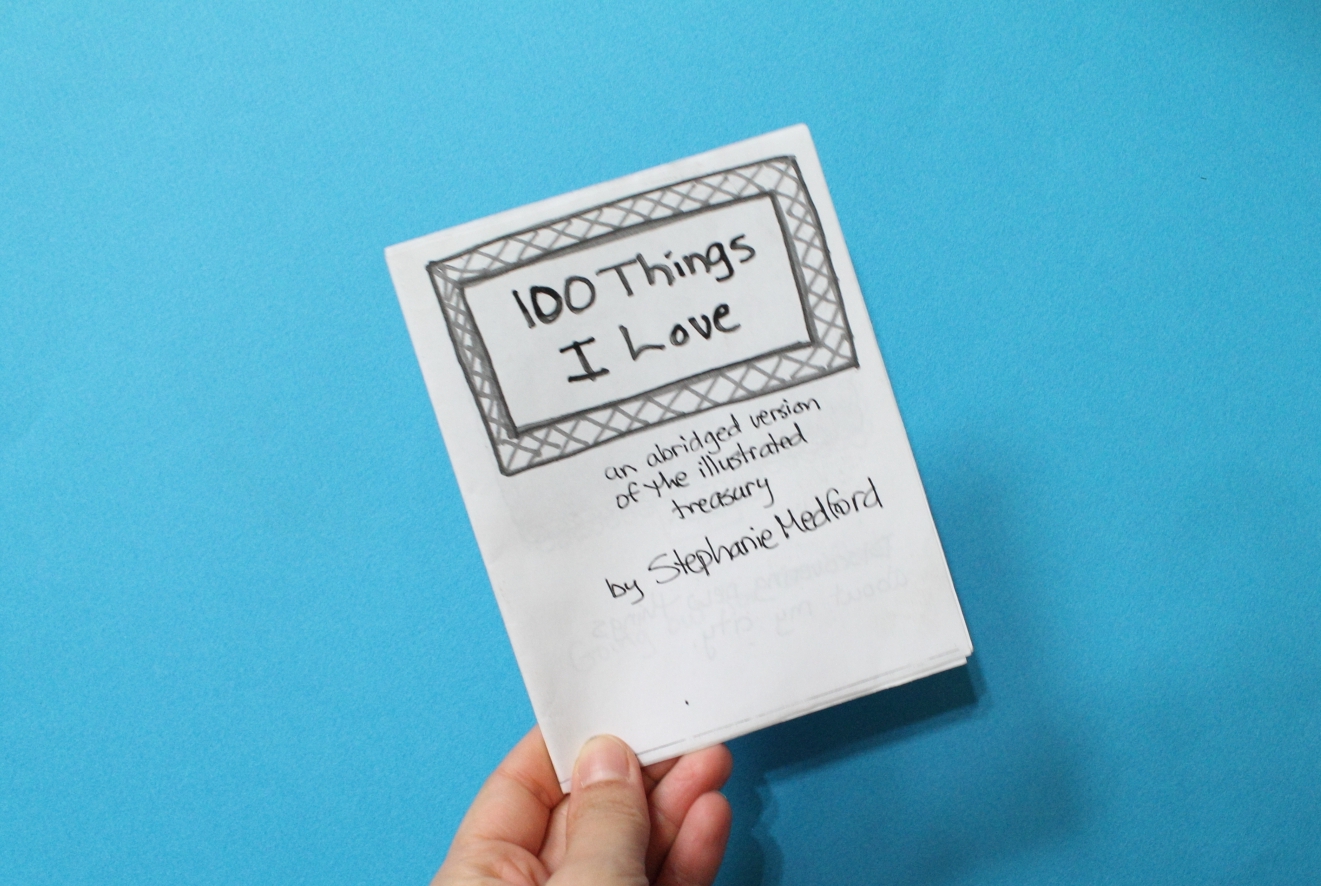On a shelf in our living room, sitting on top of an old radio, you’ll find a cardboard box with a rough, handmade sign that reads ‘ZINES’ in blue letters on a yellow background. When you pull out the box - it might take some effort because it’s crammed into a space a little too small for it - you’ll find it full of small booklets. These range from the size of a matchbook to a regular sheet of paper and they are covered in drawings, printed text, and hand writing. If you’re not careful, you’ll spend hours poring over the intriguing contents and you’ll find yourself by turns delighted, amused, informed, touched, and thoroughly confused.
What is a zine?
A zine, if you’re not familiar with the term, is a “small-circulation self-published work of original or appropriated texts and images, usually reproduced via photocopier. Zines are either the product of a single person, or of a very small group and are popularly photocopied into physical prints for circulation.” (Wikipedia) Zines have often been part of counter-cultural movements and underground arts scenes, though they can be quite mainstream as well. They can be about anything and everything and can take on almost any form imaginable - as long as it can be reproduced.
Still not sure what a zine is? Here’s a great introduction:
Why I love them
I was first introduced to zines when some friends started a zine-swapping group called Zine Age Angst. We would meet every few months to drink wine, catch up with old friends and new, and trade our newest creations. I collected dozens of zines this way and no two are even remotely similar.
I fell hard for zines and zine-swapping because it was clear that zines were a vehicle for unadulterated, uncensored creativity.
At the same time, having a scheduled meetup gave us a deadline and forced us to produce something, no matter how slapdash and last-minute it was. In fact, a slapdash, messy aesthetic was well-suited to this DIY medium that celebrates all things handmade and imperfect (I once made a zine of just lines written in Sharpie about why it was so hard to make a zine).
Some people in the group were artists, designers, or writers but most weren’t. Most were just happy to share something they love, or had been thinking or learning about. There was never any judgment of artistic skills - every single zine was met with curiosity and excitement. For a couple of years we sold our zines at a local craft market, but the primary goal was always just to share ideas - to inspire and be inspired.
The zines I made for the group included an illustrated list of things I love, sketches and notes from a journal I kept on a road trip around the U.S., a story about a spy in Communist Berlin losing his mind, a diary of my first garden, things I've learned about dealing with anxiety, and more. As you can see, they involved a lot of hand writing and cheap photocopying. I used higher quality paper to bind some of them but most were just stapled together and made entirely of copy paper.
And as for the ones I collected, here are just a few topics that I pulled out of my box of zines:
a “scientific” review of pancake breakfasts around the province
a story inspired by magazine cutouts
signs of spring in an inner city neighborhood
drawings done on an etch-a-sketch
how to make an ant farm
photos of people taking photos of the Mona Lisa
favourite poems paired with photos
drawings of garbage collected on the streets
how to have a staycation
poems inspired by the seven fonts that were supplied with Windows 95
how to grow a lemon tree
Wanna make your own zine?
The best part of zines is that they’re for everyone! There’s no reason why you can’t grab a Sharpie, some scissors, and a glue stick and start making one right now!
Need ideas? The possibilities are literally endless. You could:
- cut up magazines and print some of your favourite quotes over the images - or use your own photographs
- photocopy drawings, paintings, sketches, doodles, poems, or any little piece of something you've created
- make a list of things that inspire you and paste in images or sketches
- write about something you know a lot about - like your family tree, how to bake gluten-free or cook Persian food, or how to grow the perfect tomato - and include pictures you've taken
- draw cartoons of some daily mishaps
- write about a cause that matters to you and what can be done to help
- draw your own maps of interesting or little known places to visit in your city
In terms of structure you could:
- make a tiny zine, or a really big one
- use one long piece of paper and fold it, or roll it up
- add natural elements (my garden zine had buckwheat seeds glued to the cover and I found one that has dried leaves attached to the centre fold)
- use string, staples, fasteners, buttons, ribbons, or sew the pages together
- make each copy by hand or photocopy them









